
Key Takeaway:
- DLL Imports are important for forex trading because they allow for the integration of software functions and libraries needed for automated trading, technical analysis, and custom indicators. They work by linking programming tools and computer languages with the forex market data and MetaTrader 4 (MT4) trading platform.
- There are two main types of DLL Imports: static and dynamic. In static DLL Imports, the libraries are linked at compile time, while in dynamic DLL Imports, the libraries are linked at runtime. Dynamic DLL Imports offer more flexibility and are commonly used in forex trading.
- When using DLL Imports in forex trading, it is important to consider security risks, compatibility issues, and efficiency and performance concerns. It is best practice to properly vet DLL files, regularly update and maintain them, and test and monitor forex trading performance.
Understanding DLL Imports
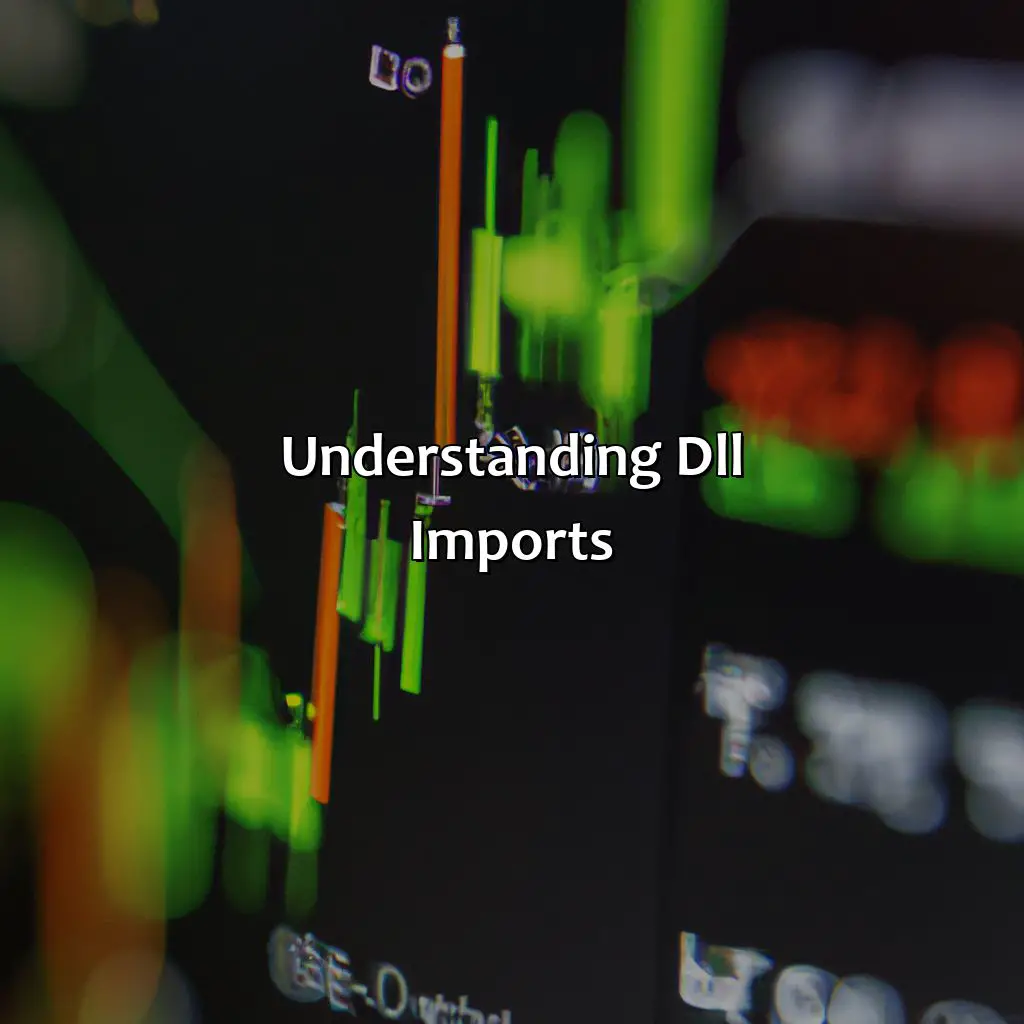
Photo Credits: forexbrokerreport.com by Michael Williams
DLL imports refer to the functionality in software development that involves calling code from a dynamic link library (DLL) in a Windows operating system. This enables programmers to reuse functions across different programming languages and system architectures. In the context of forex, DLL imports are used to integrate trading algorithms that use machine learning, pattern recognition, artificial intelligence, computer vision, and natural language processing to automate trading decisions.
When implementing DLL imports in forex, it is important to consider the potential impact of market volatility on automated trading. It is advisable to thoroughly test and validate the algorithms before deploying them in a live trading environment. Additionally, software engineering best practices should be followed to ensure the performance and scalability of the system.
Overall, DLL imports are an essential component of software development and system integration in forex trading. By leveraging the power of programming and automation, traders can improve their trading efficiency and profitability.
Importance of DLL Imports in Forex Trading

Photo Credits: forexbrokerreport.com by Adam King
In the world of forex trading, DLL imports play a crucial role in the efficient functioning of various software and tools. These imports allow the software to access functions and libraries from an operating system, as well as programming tools and computer languages. The foreign exchange market depends heavily on these imports in order to process real-time trading, market data, and technical analysis. The programming of forex trading platforms like Metatrader 4 (MT4) heavily rely on DLL imports to interpret the market analysis and develop trading strategies. Through the use of forex indicators and technical indicators, traders can make informed decisions by utilizing the data offered by these DLL imports.
The significance of DLL imports in forex trading is evident in the fact that they provide traders with access to market data and analysis tools that they would not have access to otherwise. Furthermore, traders can benefit from the wealth of knowledge provided by forex trading courses, blogs, journals, and forums. In addition, traders can gain valuable insights from forex trading chat rooms, webinars, podcasts, and videos. All of these resources are made possible by the software architecture and functioning of DLL imports.
It is important not to miss out on this valuable knowledge and resources, as they can be the key to success in the forex market. By staying informed about the latest developments in forex trading psychology, techniques, and strategies, traders can take advantage of the vast opportunities offered by the financial markets. Therefore, it is highly recommended for traders to stay connected with the latest updates in the industry and to continually improve their knowledge and skills in order to stay ahead of the curve.
Types of DLL Imports
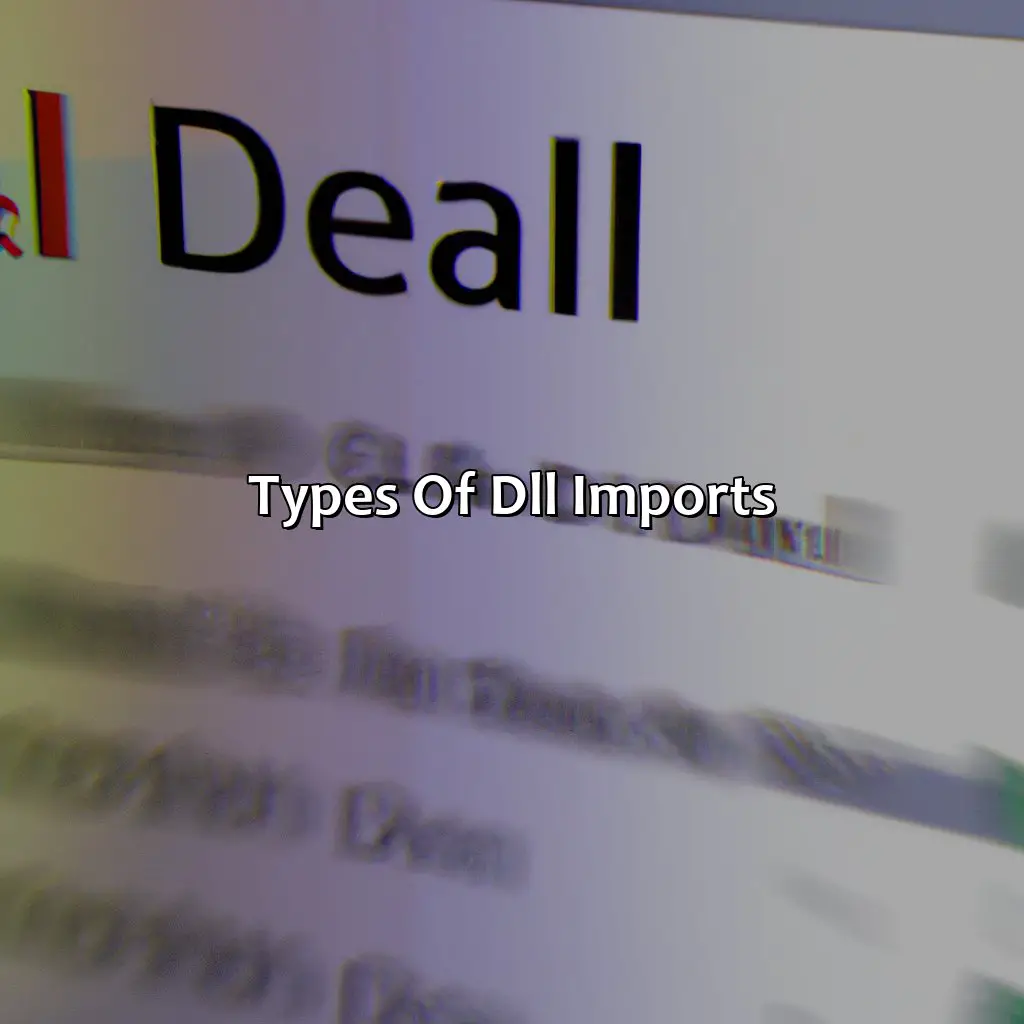
Photo Credits: forexbrokerreport.com by John Anderson
To get a better grasp of DLL Imports in forex, take a look at Static and Dynamic DLL Imports. Static DLL Imports offer the benefit of embedding a DLL in your project. Dynamic DLL Imports provide more flexibility and efficiency in code. Check both of them out to see how they can help with forex activities.
Static DLL Imports
Static library linking is a method for utilizing static DLL imports. Static DLL imports are incorporated into an executable file at the compilation process and can be utilized by the application at runtime without requiring separate DLL files.
The following table provides examples of common static DLL imports used in Forex trading:
| Library Name | Description |
|---|---|
| libfftw3 | A C subroutine library to compute Discrete Fourier Transforms |
| libboost | Provides free, open-source collections and features essential for robust implementation |
| zlib | A software library used for data compression |
Static DLL imports offer advantages, such as eliminating compatibility issues with external libraries or operating systems since all necessary code is statically linked to the executable. However, the usage of static DLL imports may result in larger executable files that consume more resources than dynamic linking.
It is important to note that static linking can lead to version conflicts if an update introduces incompatible changes between dependent libraries. To avoid potential compatibility issues, it is recommended to test and verify dependency versions.
Regular maintenance processes like updating and monitoring compatible dependencies can help mitigate security risks and ensure that applications are running efficiently.
For greater flexibility in your Forex trading strategy, you may opt for Dynamic DLL Imports.
Dynamic DLL Imports
Dynamic linking library (DLL) files that are loaded into a program during runtime are called dynamic DLL imports. Instead of relying on the operating system to load the DLL file, developers can use dynamic imports to specify which functions need to be loaded from the DLL at runtime.
Dynamic DLL imports provide more control over how program modules access external components. This allows developers to avoid loading unnecessary libraries and can improve efficiency by only reading data when it is needed. Additionally, dynamic imports allow for better error handling because functions can be loaded or unloaded as needed without causing program crashes.
One important consideration when using dynamic DLL imports is ensuring that all dependencies are properly installed and maintained. Neglecting this step can lead to compatibility issues and potential security risks.
For example, a Forex trading platform may utilize dynamic DLL imports to automate processes and enhance performance. By loading specific functions from external components at runtime, traders can quickly analyze large amounts of data and execute trades with greater efficiency.
In summary, while dynamic DLL imports offer many benefits for Forex trading and software development in general, it is important to be mindful of potential risk factors and maintain proper upkeep of all dependencies involved in the process.
Unlock the potential of forex trading with DLL Imports – powering your software, functions and libraries to dominate the foreign exchange market.
How DLL Imports are used in Forex Trading
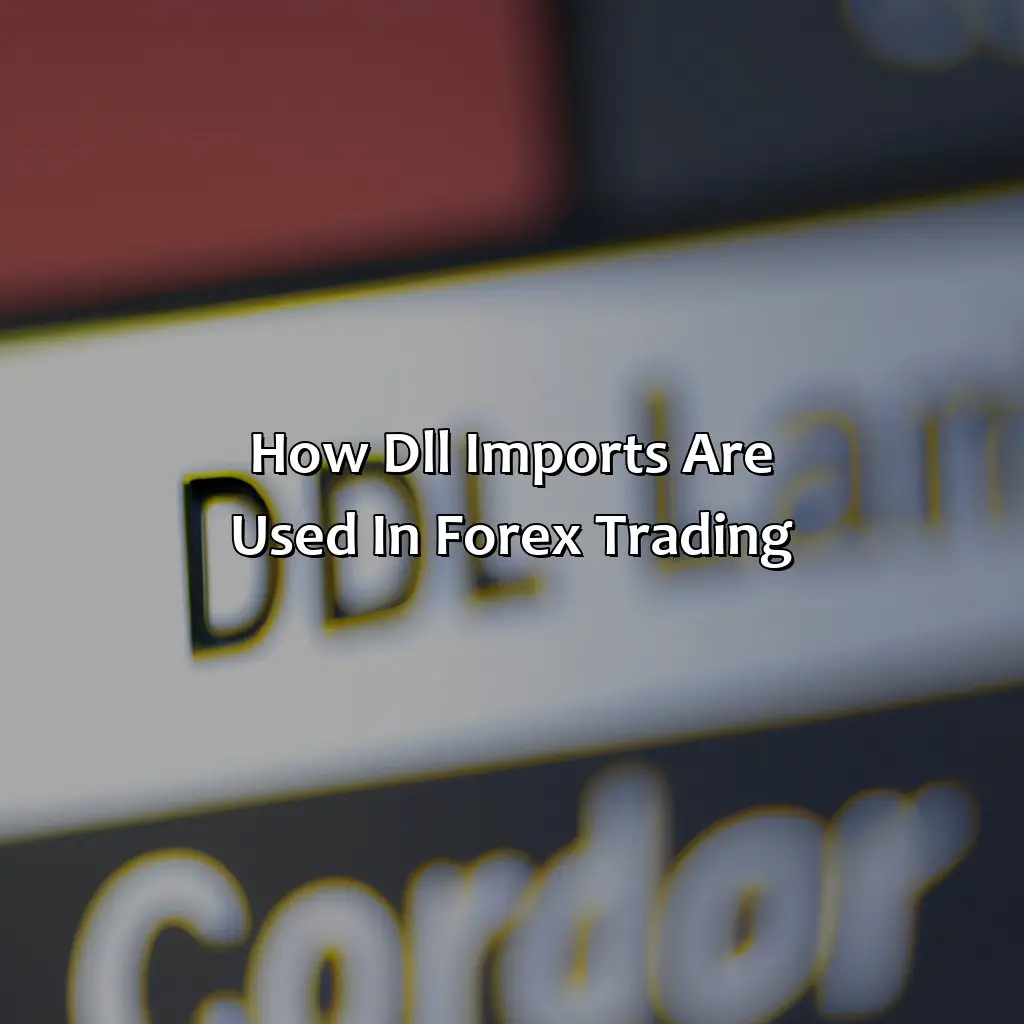
Photo Credits: forexbrokerreport.com by Arthur Davis
DLL Imports can help you make the most out of your trading strategies and automate trading processes in forex trading. They allow you to access external functions and libraries within the trading software, as well as API and operating system resources.
Let’s explore this topic further! In this section, we’ll discuss the ways DLL Imports can help enhance your trading strategies, automate trading processes, and create custom indicators. Trading algorithms, machine learning, and forex indicators can all help you improve your forex trading success.
Enhancing Trading Strategies with DLL Imports
Enhancing trading strategies through DLL Imports involves utilizing specialized software engineering techniques in forex trading. These methods include machine learning, pattern recognition, artificial intelligence, and natural language processing to enhance trading algorithms based on market volatility.
The benefits of enhancing trading strategies with DLL Imports can be seen in automated trading and algorithmic trading, where traders can automate trade execution by applying custom-built indicators directly into their forex platforms. Custom-built indicators provide traders with real-time signals for buying or selling forex currencies based on specific market data that can be analyzed using algorithms.
In addition to trade automation, enhancing trading strategies with DLL Imports involves developing personalized charts for trend analysis and computer vision to support identifying the direction the forex market is heading. By doing this, traders can gauge whether a trade is likely to move up or down and make adjustments accordingly.
Pro Tip: Enhancing your trading strategies using DLL Imports requires deep knowledge of software engineering principles as well as expertise in financial markets. Therefore, it’s important to seek advice from experienced professionals before determining the strategy that best suits you.
Let the robots do the work: Automate your Forex trading with DLL Imports and watch the profits roll in!
Automating Trading Processes with DLL Imports
Automating Forex trading processes through DLL imports involves utilizing software engineering techniques to develop algorithmic trading strategies. These strategies use machine learning, pattern recognition, artificial intelligence, computer vision, and natural language processing to generate buy or sell signals. By incorporating DLL imports into automated trading systems, traders can execute trades without manual intervention.
The process of automating Forex trading begins with identifying profitable trading patterns in historical data using machine learning algorithms. These algorithms then generate buy and sell signals based on the identified patterns. The resulting signals are executed automatically by the trading system using DLL imports.
The advantage of automating Forex trading with DLL imports is that it enables traders to execute high volumes of trades using predefined rules quickly. This approach eliminates human emotions such as fear and greed from making trade decisions, which often lead to losses.
One notable example of an automated Forex trading system that uses DLL Imports is the MetaTrader 4 platform provided by MetaQuotes Software Corp.
Overall, automated trading through DLL imports has extensive applications in the Forex market and provides an efficient way for traders to maximize profitability while minimizing risks associated with subjective decision-making.
Transform your forex strategy with custom indicators powered by DLL Imports.
Creating Custom Indicators with DLL Imports
Customizing the Forex trading indicators with DLL Imports is an efficient way to optimize trade strategies in real-time. By incorporating custom technical indicators, traders can gain a competitive edge.
Here are six steps for creating custom Forex indicators with DLL Imports:
- Find or create a custom indicator using programming languages like C++ or Python.
- Convert the code into a dynamic link library (DLL) file.
- Import the DLL file into the trading platform.
- Attach the indicator to a chart and modify its settings in real-time.
- Backtest and optimize your strategy with custom Forex indicators to maximize returns.
- Clean up your code periodically to maintain optimal performance over time.
While creating custom indicators, traders can utilize features such as trend lines and price targets that are not available in standard technical analysis tools. By utilizing these additional tools, traders can identify profitable opportunities more accurately and execute trades confidently.
When designing DLL files for customized technical analysis, it is crucial to ensure they are secure and compatible with your setup. Regular maintenance of code quality can prevent errors from occurring during trade execution. It is also helpful to monitor strategy performance continuously.
Overall, customized Forex indicators using DLL Imports provide significant benefits for traders looking for an edge in competitive markets. Don’t let DLL Imports become the Trojan horse of your forex trading strategy – be aware of security and compatibility risks.
Risks and Considerations when using DLL Imports
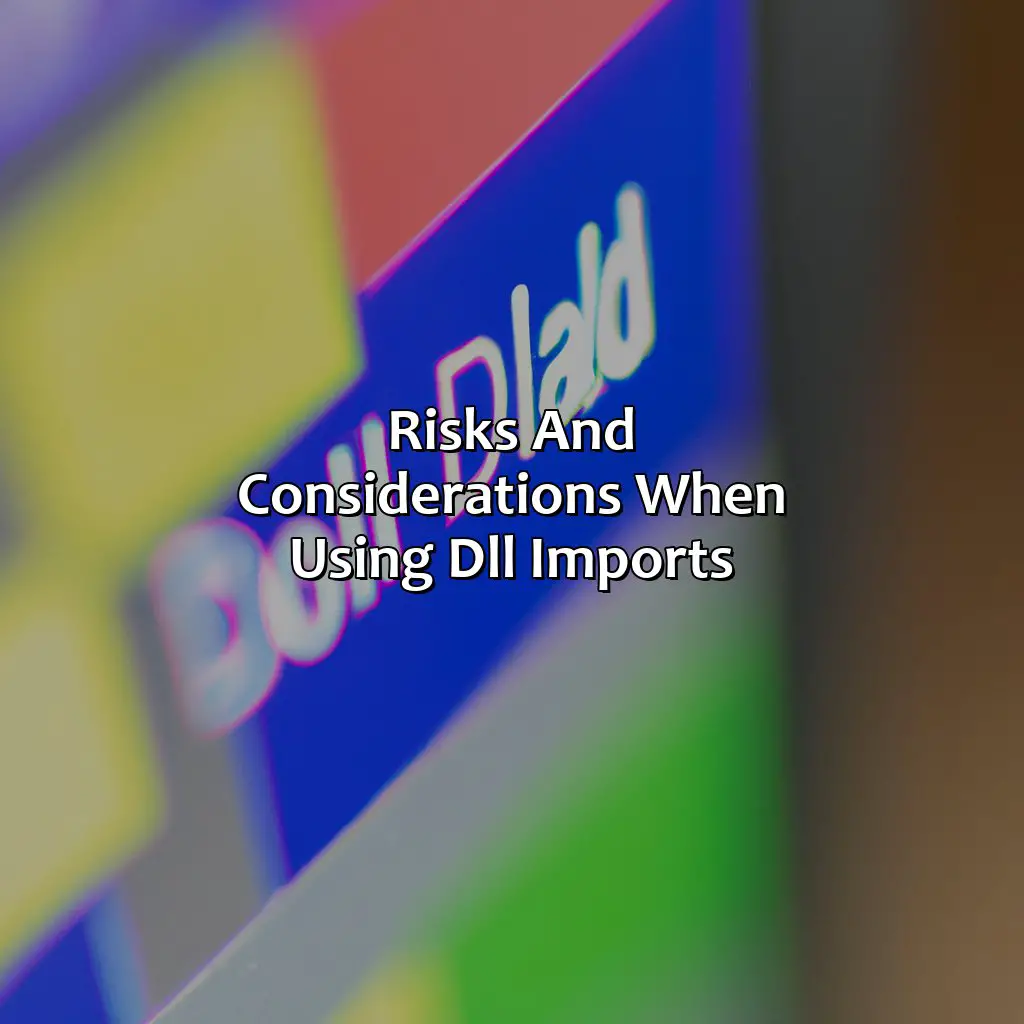
Photo Credits: forexbrokerreport.com by Tyler Johnson
You may need to use DLL Imports for a safe and efficient Forex trading experience. But, these come with certain risks and considerations. Be aware of security risks, compatibility issues, and performance and efficiency concerns when using DLL Imports. To help you decide on a trading strategy, let’s look at each sub-section more closely.
Security Risks
DLL Imports in forex trading come with various security risks that traders must be aware of. These vulnerabilities arise because DLL files can be tampered with, infected with malware, or exploited by hackers to steal sensitive information. Even reputable DLL files may not be entirely secure, as they can still carry some vulnerabilities. Therefore, traders should exercise caution when utilizing DLL Imports and ascertain the safety and authenticity of these files.
One tip to minimize security risks when using DLL Imports is to conduct thorough research on the sources of the DLL files and verify their credibility before using them. Traders should also ensure that these files are updated regularly to address any identified vulnerability. In addition, maintaining a solid antivirus solution and keeping it up-to-date is essential in guaranteeing system cleanliness.
It is worth noting that forex trading algorithms executed with DLL Imports could have compatibility issues with other programs running simultaneously. This aspect adds a level of complexity to executing trades effectively since traders need to ensure high trading efficiency within an acceptable timeframe.
To mitigate security risks associated with the use of DLL Imports, trader developers must adhere to best practices such as regularly vetting DLL files, opting for digitally signed third-party vendors rather than untrusted sources, providing only relevant necessary privileges during file installation among others. Diligently applying strict security measures while utilizing DLL Imports will significantly reduce exposure to potential threats and vulnerabilities associated with forex trading applications.
Compatibility issues can derail your forex trading success faster than a glitchy DLL import.
Compatibility Issues
DLL Imports can result in compatibility issues when a DLL file is not compatible with the trading platform or operating system used. This can result in errors, crashes, and make trading difficult. Compatibility issues may also arise when two or more DLL files used in the same trading system have different versions or are not designed to work together. These issues can be time-consuming and expensive to troubleshoot.
To avoid compatibility issues, it is essential to ensure that all DLL files used in forex trading are properly vetted and compatible with the trading platform and operating system being used. Additionally, regularly updating and maintaining these files will minimize compatibility risks.
Furthermore, traders must test and monitor their forex trading performance to identify any compatibility concerns continually. A thorough understanding of the software requirements is necessary before implementing a new DLL file into a current trading system.
A true story of compatibility issues arose when a trader’s automated system suddenly stopped working after upgrading to a newer version of a trading platform. After several hours of troubleshooting trying various solutions, it was discovered that an outdated DLL file was causing the issue. The trader learned the importance of proper maintenance checks on all DLL files to avoid potential performance failures due to compatibility issues.
Struggling with DLL Imports in Forex Trading? Don’t forget about potential efficiency and performance concerns.
Efficiency and Performance Concerns
With regards to using DLL files in forex trading, there are various concerns related to operational performance and efficiency that need consideration. These types of concerns can include latency issues, synchronization challenges, execution speed limitations, and resource overall allocation. Performance implications may arise as a result of low-quality DLL files or poor integration with indicators and trading strategies. Thus regular testing is essential for assessing any performance-related issues that may negatively impact the trading process.
While DLL imports can improve the efficacy of forex trading processes, considerations must be taken into account to optimize how they are used. Therefore, traders need to conduct regular monitoring and analysis of their applications to avoid potential errors or compatibility problems with other software systems.
Pro Tip: Lastly, it’s important not to let the benefits of DLL imports overshadow security risks and proper vetting procedures for safeguarding the integrity of trading data.
Ensure DLL Imports are your tools, not your masters, and follow best practices for optimal Forex trading performance.
Best Practices for Using DLL Imports in Forex Trading
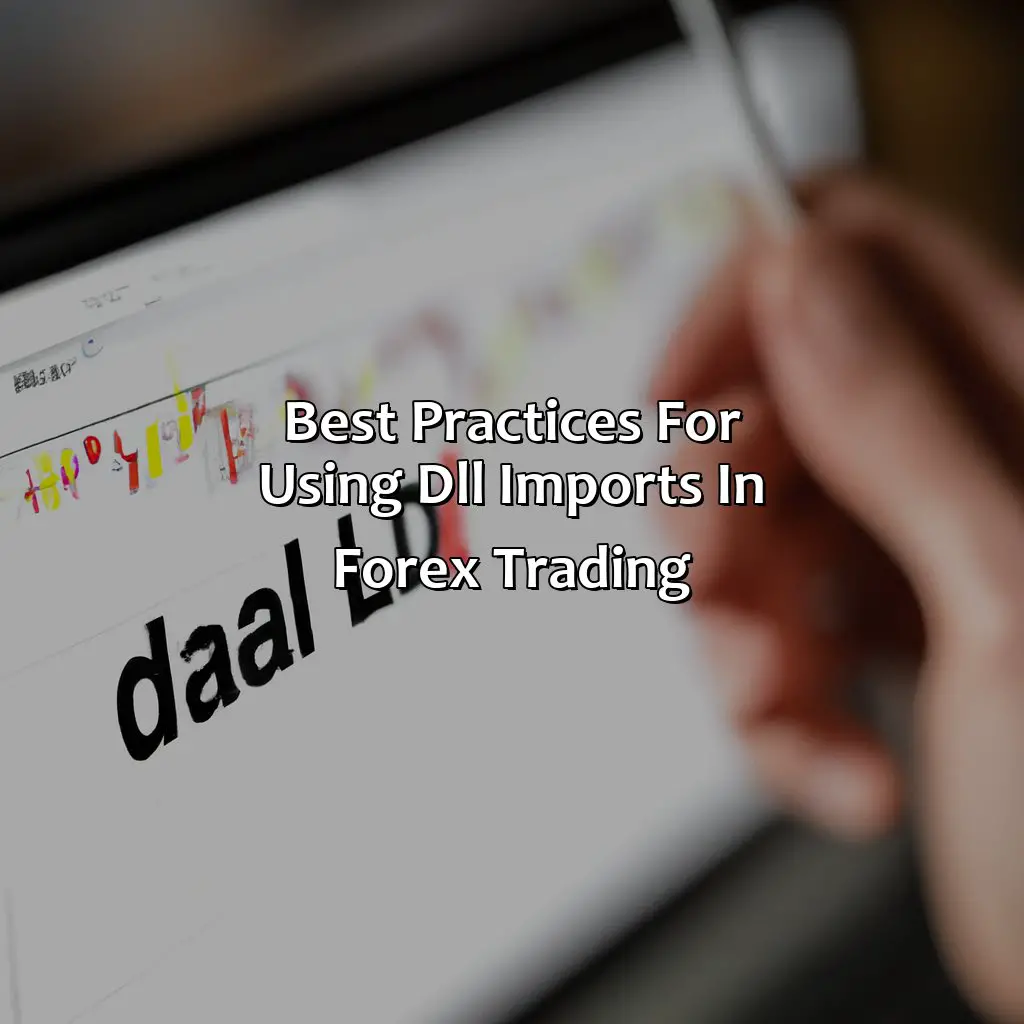
Photo Credits: forexbrokerreport.com by David Ramirez
For forex trading software, DLL imports must be managed correctly. Vetting DLL files is essential to reduce security threats. Updates and maintenance are also important to maximize the architecture. Testing and monitoring the performance with DLL imports will help you track progress.
Properly Vet DLL Files Before Using Them
Before utilizing DLL imports in Forex trading software, it is crucial to properly examine and vet the files. This involves verifying the origin and authenticity of the files, checking for potential security risks, and ensuring compatibility with the operating system.
To ensure safety and efficiency in Forex trading software, it is essential to properly verify DLL import libraries prior to use. This process involves assessing the source of the file and confirming that it is authentic and free from malware or other security risks. Additionally, programmers should test the libraries for compatibility with their computer programming environment.
It is important to note that using unverified DLL import files can cause severe performance issues or even expose one’s operating system to malicious threats. Therefore, considering security risks when using such files is critical.
To prevent potential harm while taking advantage of DLL imports for Forex trading performance maximization, traders need to critically assess DLL files before implementing them into their software.
Fear of Missing Out (FOMO) on improved performance should not override caution in selecting DLL imports for use in Forex trading software. Proper vetting minimizes occurrence of undesired consequences like malware installation or program crashes.
A neglected DLL file is like a forgotten child in software development – it can lead to chaos in system architecture and diminish the potential of machine learning, pattern recognition, artificial intelligence, computer vision, and natural language processing.
Regularly Update and Maintain DLL Files
Maintenance and updates of DLL files are crucial for maintaining forex trading performance. Ensuring proper upkeep helps guarantee efficient system architecture, software integration and machine learning. This includes periodic updates to incorporate advancements in pattern recognition, artificial intelligence, computer vision and natural language processing.
Regularly monitoring the efficiency of DLL imports can prevent issues like security breaches or compatibility glitches that could compromise performance. Proper maintenance also eliminates risks of incorrect data analysis in trade automation tools.
Avoid system latency with prompt DLL maintenance. Work with reputable providers, read reviews and get feedback from expert traders to ensure that you’re on top of all important updates.
Stay ahead of competition by keeping up-to-date with the latest techniques in trading strategies, custom indicators creation and automated trading processes using dynamic dll imports. This ensures robust forex trading performance while avoiding complications due to security risks, compatibility issues or imperfect organization.
Track your forex success with DLL imports and stay ahead in the trading game.
Test and Monitor Forex Trading Performance with DLL Imports
To optimize Forex trading performance, traders can test and monitor the DLL files used in their strategies. This involves analyzing the effectiveness of imported functions and addressing potential compatibility issues that may arise. Through this process, traders can identify areas for improvement and adapt their strategies accordingly.
By conducting regular evaluations of DLL imports, traders can refine their strategies to better align with market conditions. This includes monitoring key performance indicators such as trading volume, risk management metrics, and revenue generation targets. In doing so, traders can adjust their DLL imports to accurately reflect these values and improve overall trading outcomes.
It is important to note that testing should be conducted in a controlled environment with accurate historical data to ensure authenticity. Additionally, any adjustments should be made gradually to prevent significant disruptions in trading activity.
Pro Tip: Traders should leverage testing tools such as backtesting software or forward-testing systems when evaluating the impact of DLL imports on their overall strategy performance.
Some Facts About DLL Imports in Forex:
- ✅ DLL (Dynamic Link Library) Imports are a way for forex traders to use external programming code to enhance their trading strategies on the MetaTrader 4 and 5 platforms. (Source: MQL5)
- ✅ DLL Imports allow traders to access additional functionality that is not available within the platform’s default programming language, MQL. (Source: EarnForex)
- ✅ The use of DLL Imports in forex trading requires knowledge of programming and experience with the MetaTrader platform. (Source: DailyFX)
- ✅ DLL Imports can be used to create custom indicators, scripts, and Expert Advisors (EAs) in forex trading. (Source: Admiral Markets)
- ✅ DLL Imports carry some security risks, as they allow external code to be executed on the trader’s computer. (Source: FXCM)
FAQs about What Are Dll Imports In Forex?
What are DLL Imports in forex?
DLL stands for Dynamic Link Library, which is a type of file that can be imported into forex-related software like expert advisors developed using MQL4 or MQL5. These DLL files contain functions and features that can be utilized within the forex program.
Why are DLL Imports used in forex?
DLL Imports can add expanded functionality to forex-related software and expert advisors. They can help traders create more complex technical analysis tools and automate more trading processes.
How do DLL Imports work in forex?
DLL Imports can be incorporated into forex software through coding. When the software is running, it calls upon the DLL file to execute certain functions. These functions can carry out complex calculations and analysis, and they can be customized to fit specific trading strategies.
What are some examples of DLL Imports used in forex?
Some examples of DLL Imports used in forex include custom indicators, trading algorithms, and risk management tools. These can be created and customized by traders or purchased from developers.
What are the advantages of using DLL Imports in forex?
The advantages of using DLL Imports in forex include the ability to automate trading strategies, create more complex technical analysis tools, and increase the efficiency of trading processes. They can also provide traders with a competitive edge in the market.
Are there any risks associated with using DLL Imports in forex?
The main risk associated with using DLL Imports in forex is the potential for security breaches and malware. It is important to use reputable DLL files and to practice good cybersecurity habits to protect against these risks.


